
Typical scene in Bologna, cyclists rolling by an outdoor restaurant seating zone where there might have been parking... very civilized!
I had my first visit to Bologna, staying with Gaia Guiliani, a charming post-colonialist, feminist, radical academic and activist. She and her friend Ghiada, along with some assistance from my Irish friend Alan Toner, provided the simultaneous translation for a Nowtopia reading at the Modo Infoshop in the city center on Monday night. A big crowd of 40+ jammed into a small space, more suitable for about 10-15, and we did a version of my usual presentation, but given the time it takes to translate everything, by the time we were done, it had been 2.5 hours! So even though I’d cut down the main parts of the Talk by half, it still was way too long. Now I’m going to Milan to do another bookshop tonight, Utopia Bookstore, and I’m planning to forego all reading and just do an improvised presentation. Having done the other one so many times, it will be easy enough, but of course I always worry about losing coherence.
Anyway, there was a good discussion after the Talk, and as often happens, I don’t remember well all the points raised. (Might have something to do with all the wine and grappa we downed until the wee hours following the presentation!) Alan questioned me on two important points: where did I stand on the critique neo-Malthusianism, since the common attitude growing among enviros and others in the U.S. and parts of Europe is to say that China, India and other newly modernizing countries must be restrained from the over-exploitation of resources and the hyper-production of CO2 and a wide range of pollutants. The other issue he brought up dovetailed with comments I received in Stockholm last December, and from some friends and family at home, wondering how the Nowtopian initiatives contribute to a sharper level of political contestation (if they do at all), or if they aren’t a new paradigm of cooptation and integration?
On the first one, I found myself quoting that line from the Bolivians, “there’s enough of everything for everybody, but not enough for some people to have a lot more.” Of course we have to avoid falling into the trap of neo-colonialist thinking, that people in other parts of the world must be restrained from trying to raise their standard of living because of its inevitable ecological price. It’s true that everyone can’t live like Americans and Europeans, but neither can Americans and Europeans really. I was asked at the outset to describe how I was different from Tito Boeri, the economist with whom I shared the stage in Siena (the guy asking had been there and wanted to bring out more of our debate about growth). So I went from this question of neo-Malthusian resource scarcity to talk about the necessity of degrowth, or as the Italians call it descrescita. I’m visiting the folks who call themselves “Descrescita Feliz” (Happy Degrowth) later in the trip. I really believe we can have a great standard of living, globally, if we can radically reengineer our use of water, electricity, and all resources so we’re using a lot less to produce a good life. Living well is improperly defined in our society with measurements of resource consumption, money changing hands, etc. So I know it’s still only a few voices on the margins, but I do hope to contribute to the popularization of this larger discussion of transitioning to a new material approach to reproducing a good life on this stressed planet.
On the second point, Alan offered the example of the banks. After the G8 protest in Genoa in 2001 30 banks had been sacked and burned. But now, after the blatant theft (transfer) of trillions of dollars and euros directly to the banks and their managers and shareholders, there’s been barely a peep. Point taken: the kinds of political protest and expression that we have been accustomed to associating with radicality are in abeyance, or maybe they’re being left behind. I pointed out the obvious: two days after those 30 banks had been sacked they were repaired and open for business. After every riot and uprising, things go back to normal remarkably fast”¦ unless they don’t! But that rupture that we all yearn for is elusive at best, and I really believe that most of what I’m describing as Nowtopian illustrate a lot of people who are doing their best to make deep, lasting changes in their daily lives. Changes in how they relate to one another” more cooperation, more skill sharing, more creative appropriation of technologies as well as the waste stream of capitalist consumerism” and also a change in their relationship to work, to the reproduction of life itself. To be sure, they are not in a state of open revolt and contestation with the powers that be, politically or economically, but they are eroding the foundations of an obviously obsolete organization of life. Or they can be, and sometimes are. Certainly it’s also true that sometimes they’re not, and they are busily founding new small businesses with a preponderant concern for the preservation and expansion of their new business activity in this context of markets and money, not the sustenance of a new kind of enterprise that aspires to exist beyond and outside that logic. That’s why we need more conversation, more discussion about the meaning of our work, the choices we’re making, etc. But it’s certainly not a requirement that to be politically meaningful, or even to prove that we’re not passively accepting things the way they are, that we go out and sack banks, break cars, or any of those kinds of activities. Those spectacular moments of property destruction are very satisfying for the protagonists, but don’t have much staying power, nor do they reliably extend themselves, or grow a larger constituency of radical opposition. Sometimes, sure, but much more often, no.
So that’s the fun of doing these tours, getting to dig into these kinds of questions in public. The other fun side is a kind of urban traveler experience, getting to see other cities, learn a bit about their histories, taste the special foods, discover some of their secrets both old and new. Leonardo Artami and Rachele Lapponi wanted to interview me for a video project, which we did in the local Ciclofficine, Ampio Raggio which in turn is inside a typical Italian social center, XM24, in an abandoned and converted factory. As usual it was decorated with some impressive murals, in this case by the artist Blue, who has a great online video well worth checking out. He had murals near where I was staying too”¦ here’s a few shots of them:
After the interview and the visit to the Cicclofficine, and with rain clouds approaching, we took off on a tour of the old city center. Bologna is very old, and one of the churches we went by drew me in, Santo Stefano. It’s made up of four or five different structures built over several centuries, starting in the 5th century CE and continuing into the 1400s. The brick work is stunningly beautiful, and the inner courtyards create such inviting and cozy spaces. In front of St. Stefano is a triangular piazza that had beautifully arched facades all around, and seemed again to be such a harmonious and gorgeous public spaces.
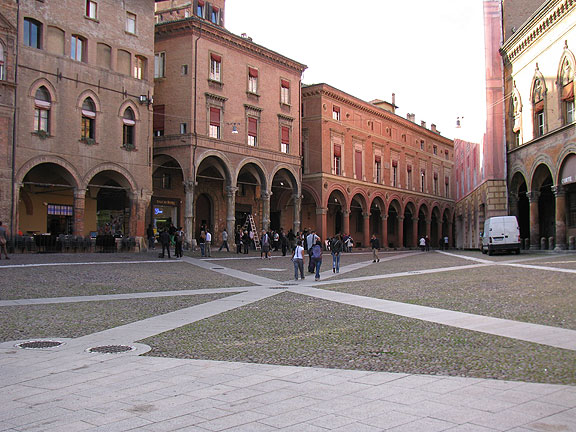
This is the triangular piazza in front of Santa Stefano, which you can also see in the photo just above.
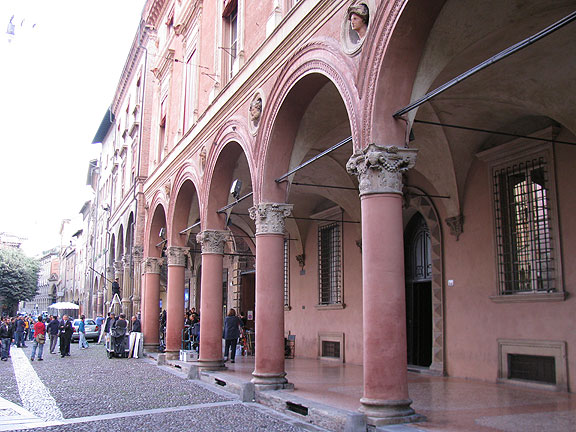
This building is visible in the previous one in the back left... it has amazing heads peering down at you as you walk by.
Leonardo and Rachele explained to me how this particular piazza was heavily policed, and if we were to come in the evening we would find 3 or 4 police vehicles and not much else. Apparently the local rich residents fear the large student population in Bologna taking over their piazza for hanging out, drinking, playing guitars, and generally carousing into the night. I got a quick insight into the sharp tension between long-time Bolognese and the ever fluctuating but large population of students. I assume this tension is itself centuries old!
After a great lunch at a small popular restaurant (I had my obligatory Bolognese, which was great, followed by a fine Tiramasu) we rode around some more. Later we climbed the big tower in the center which gives an incredible panorama over the whole city.
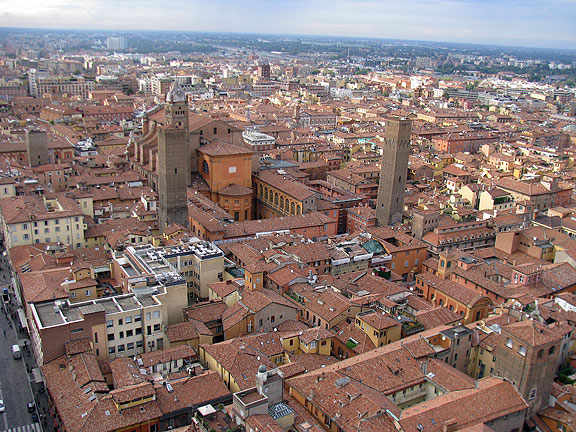
The stone towers in this image once covered the city. And I'm standing on the tallest one still standing to take this photo.

Dim blurry photo of a drawing of what Bologna might have looked like in the 1400s. The tower I was on was built between 1109 and 1119.
Quite a blatantly phallic architectural phenomenon, apparently it was the norm for all families to build their own towers, the taller the more the important the family was!
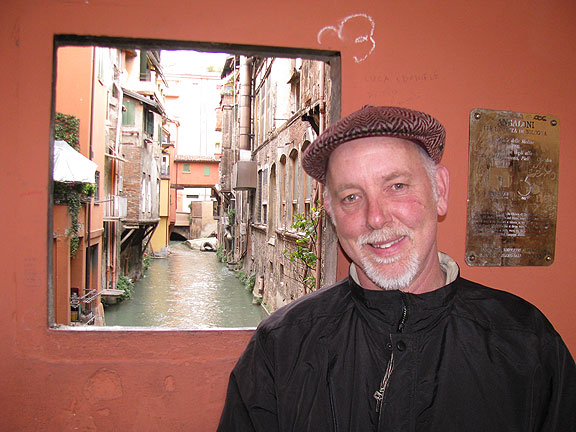
One of Bologna's secrets: a small stretch where an ancient canal is still visible through this portal.
We ended our lovely day of touring and chatting by heading over to a weekly Farmer’s Market specializing in organic produce and fresh cheeses. The goat cheese was amazing! So fresh and delicious!

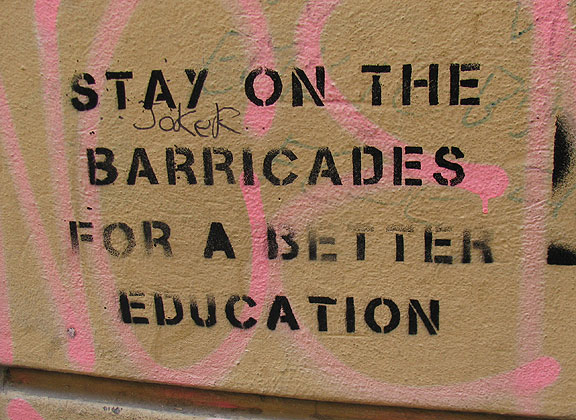
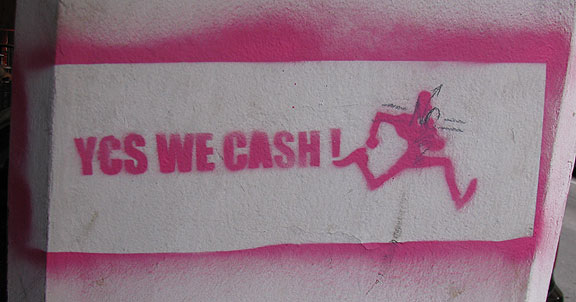
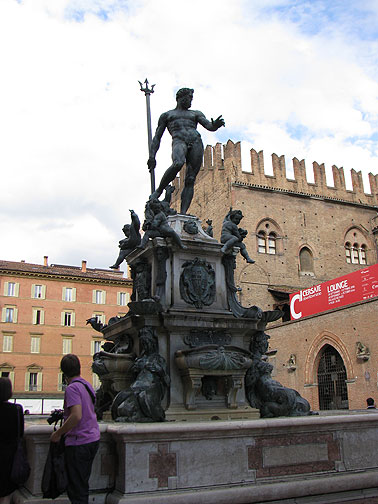
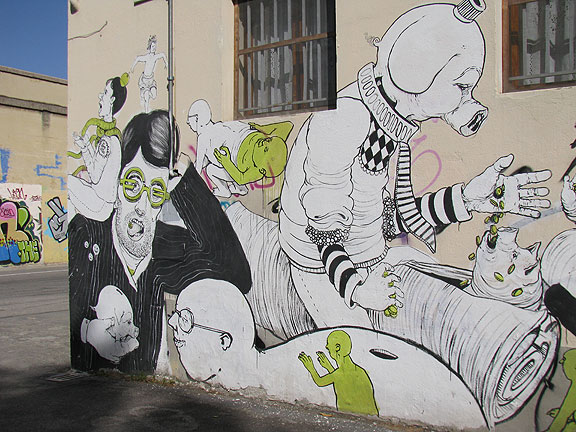
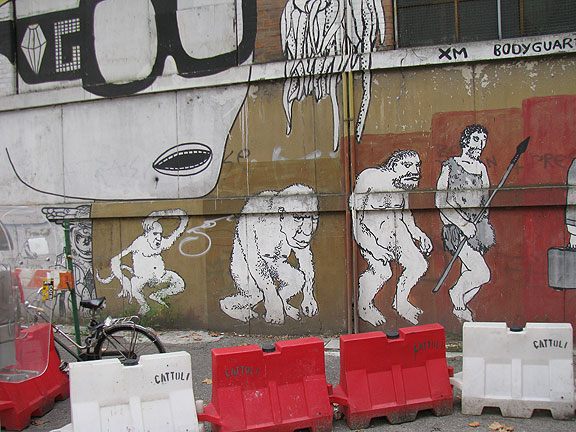
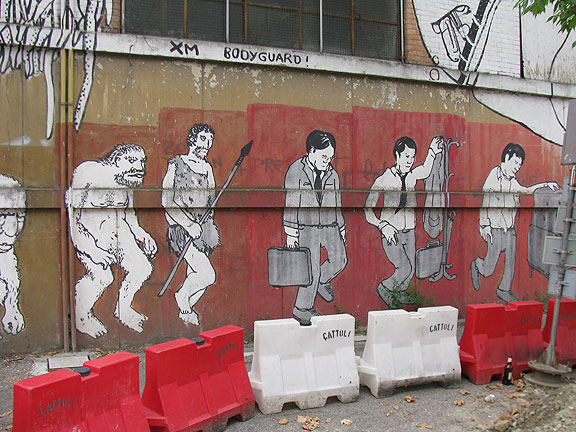
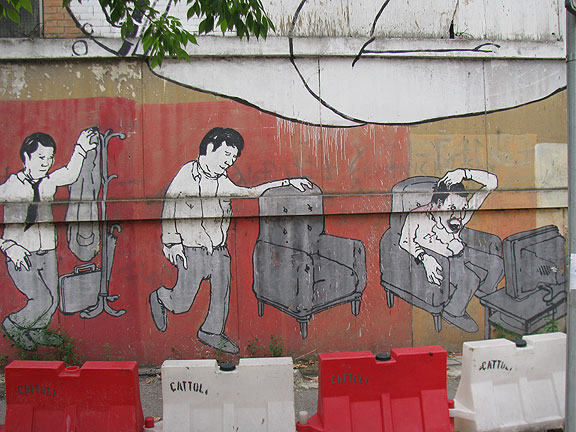
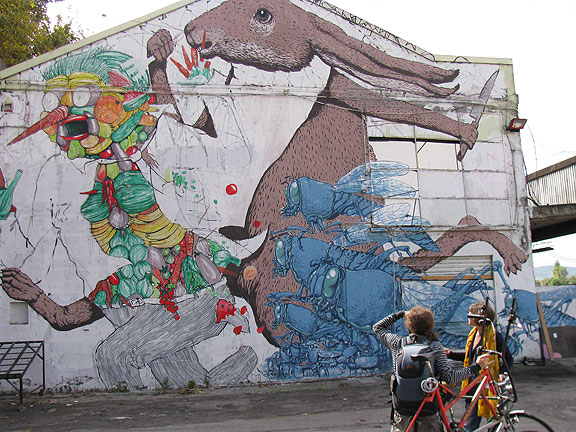
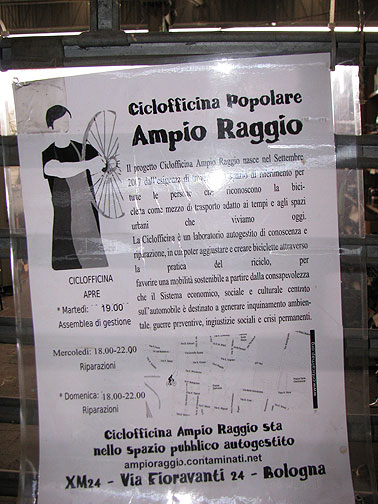
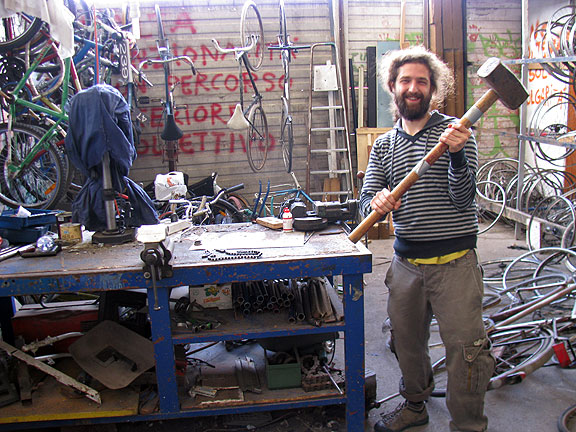
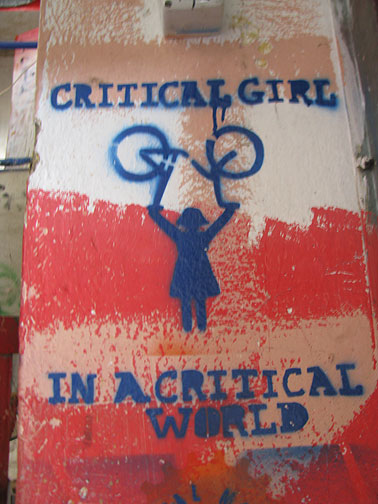
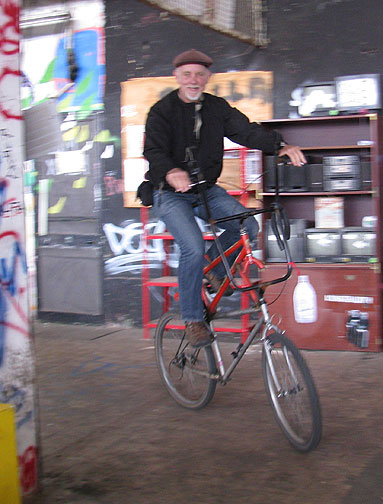

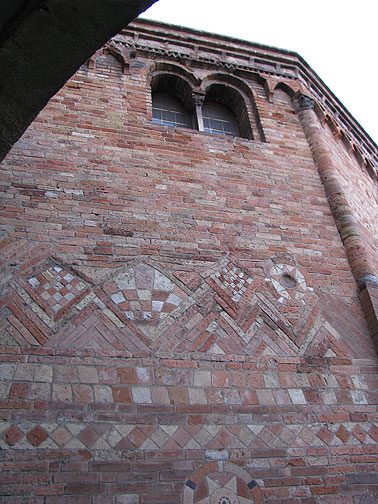
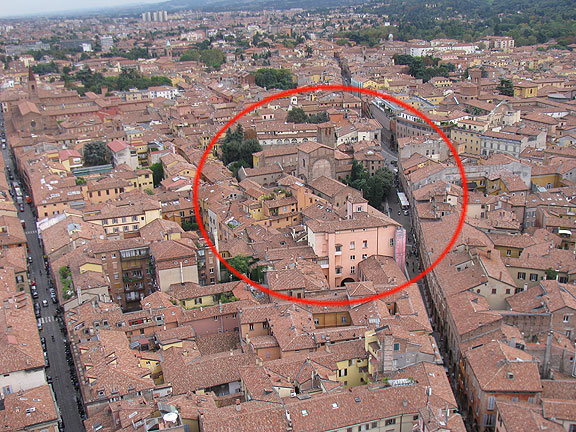
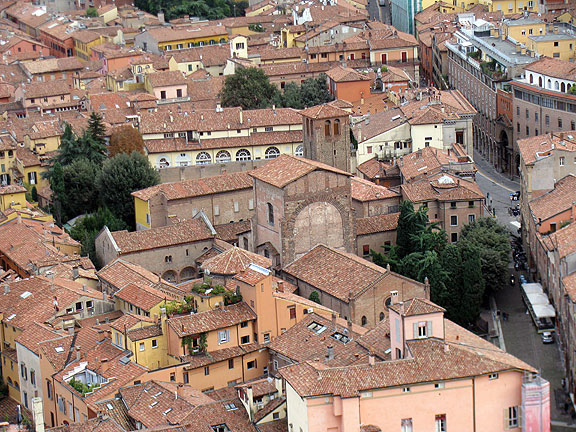
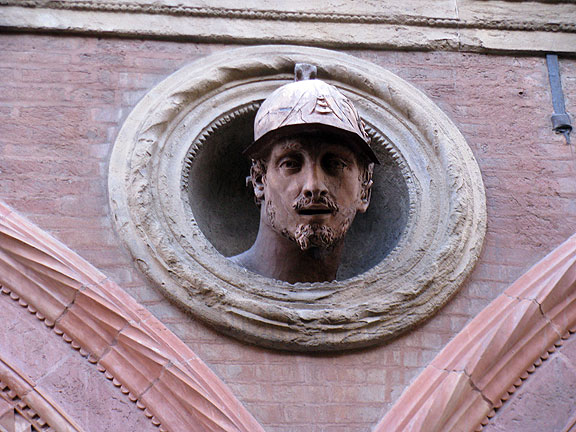

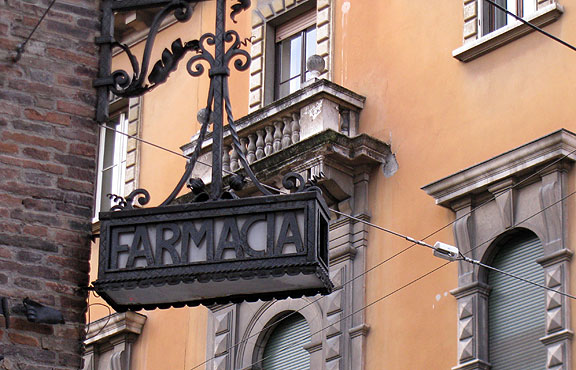
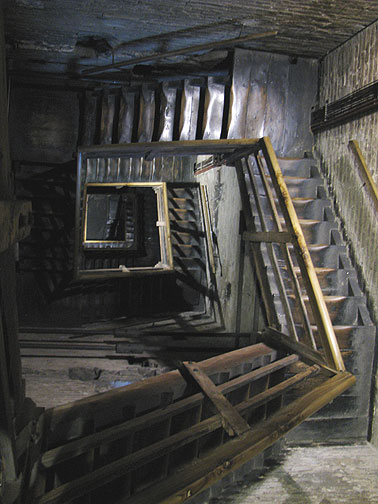
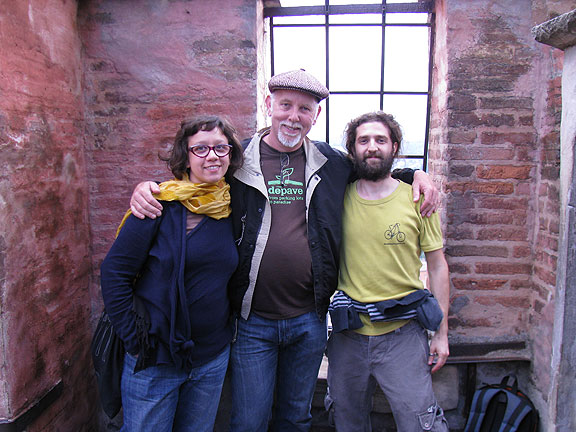
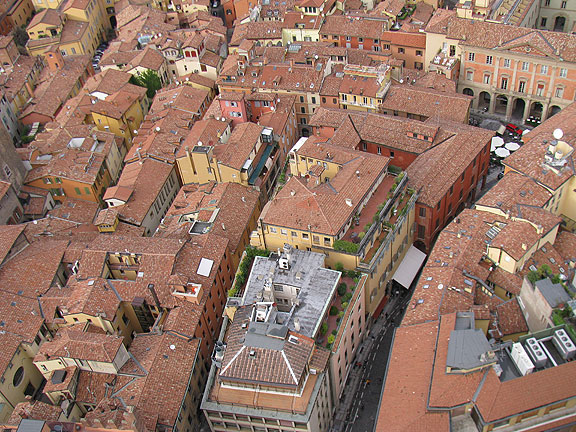
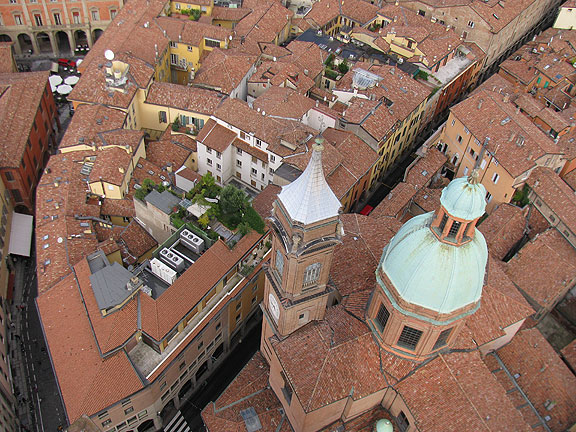
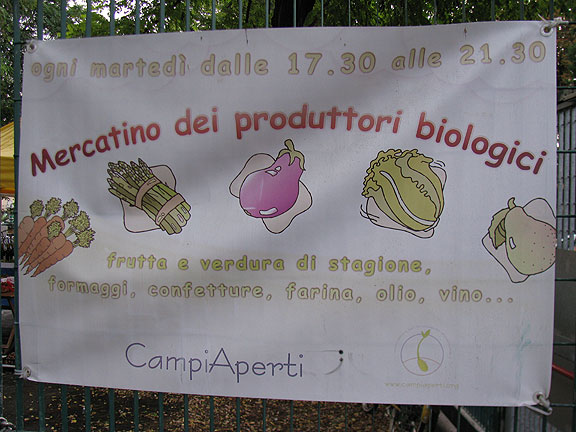
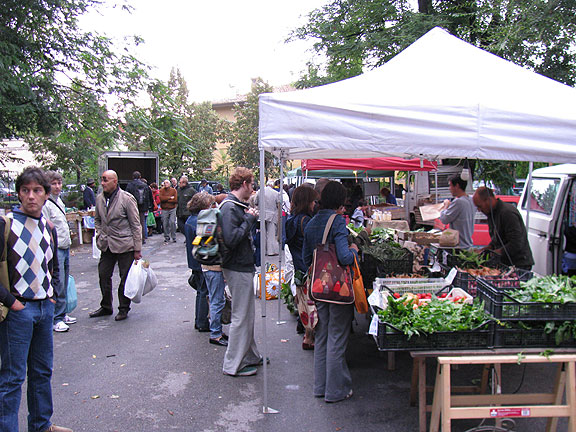
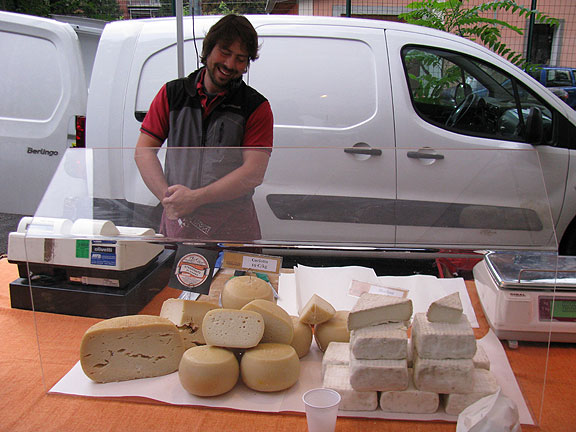











Leave a Reply